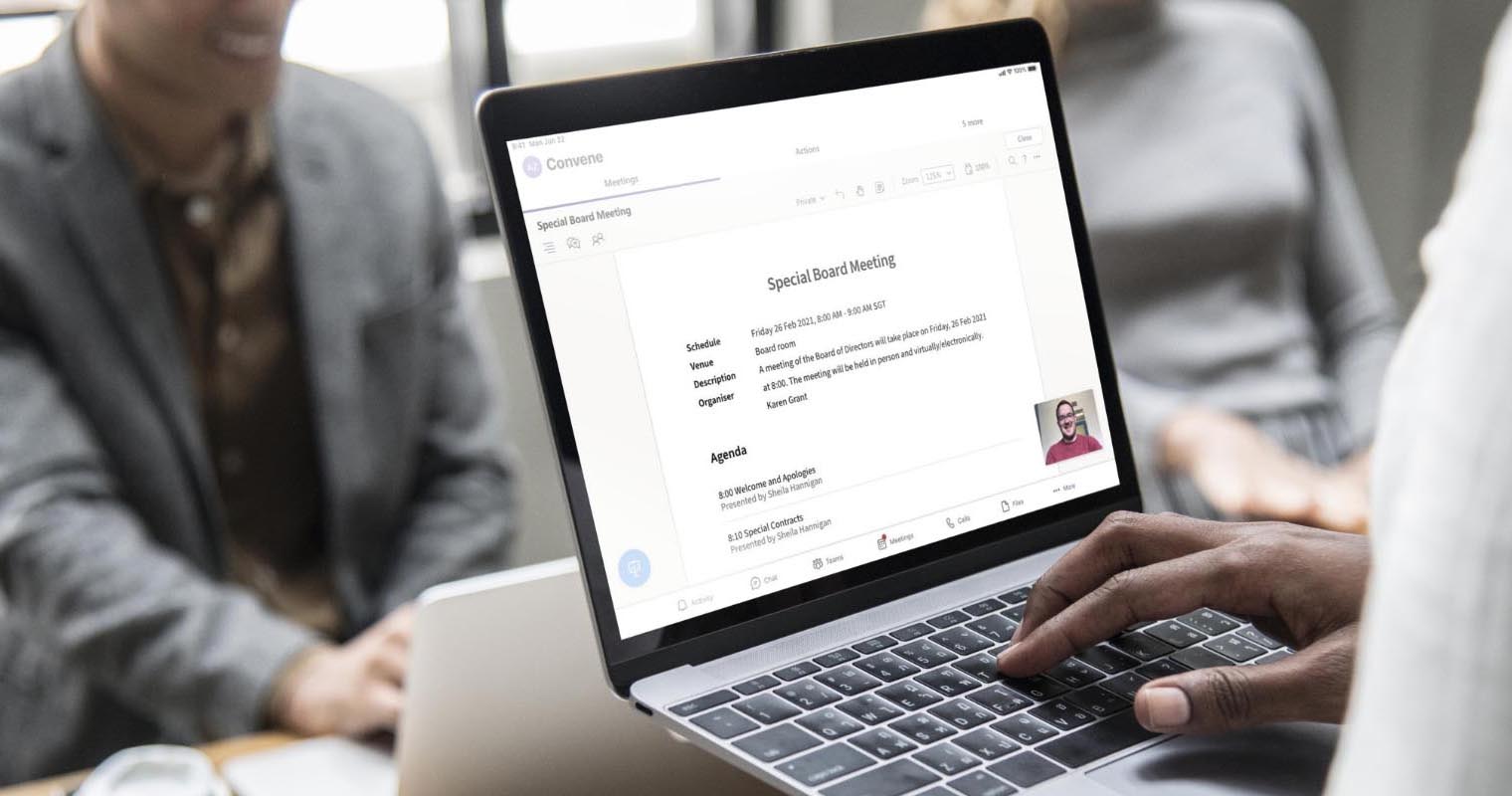Work meetings can be indeed very taxing to prepare and run. Despite this, they provide opportunities to collaborate, generate new and creative insights, and even add value to the entire company. With strong leadership and careful planning, ensuring every meeting is purposeful or productive is simple. To make your life easier, let’s take a deep dive into some essential meeting facts:
The Different Types of Meetings
Before you think about the content and participants, it is important to first decide the purpose of the meeting. Does your team need to come to a decision, or are you meeting to plan for a new product? Here are the different types of business meetings that you should know:
- Decision-making meetings — A decision-making meeting is typically done when selecting a new hire or a company logo. A collaborative participation style is needed if the group in the meeting is weighing on multiple options, and is often led by advisers or a senior chair or leader.
- Planning meetings — The intention for this meeting type is to create plans, as well as ensure their right implementation. It includes campaign planning and product roadmap planning and is often led by the project owner or an external facilitator.
- Team-building meetings — Intended for strengthening teamwork and cohesion, these meetings often use team challenges and games to create an interactive and fun atmosphere. It can also be composed of structured activities that can boost employee productivity, happiness, and morale.
- Problem-solving meetings — This type of meeting is ideal for determining a cause or a solution to a specific issue. It can be a strategy session or an incident response discussion, which focuses on both short-term and long-term solutions. Ideally, the participants should arrive at a definite solution, assignments of responsibilities, and prevention measures.
- Brainstorming meetings — Also called idea-generating meetings, these sessions are ideal for creating innovative solutions, figuring out potential blind spots, and generating fresh ideas for new products. Examples of brainstorming sessions are ad campaign creation and product development.
Why You Should Have Meetings
Now that we know the different types of meetings, it’s time to understand why their sessions are crucial. To put it simply, meeting time is used to build and develop certain strategies and ideas or share product updates and company information.
Meetings offer a valuable session for a variety of functions, allowing organizations to not only make decisions or build ideas but also develop relationships within teams. In fact, 19% of employees who work from home revealed they felt disconnected and lonely — making meetings an ideal way to ensure everyone feels they belong to the team. A properly structured team meeting is one effective way to build rapport.
The Basics of a Meeting

Research suggests that 71% of business meetings are deemed unproductive, with about 30% of employees saying they spend more than five hours in meetings every week. While this is not surprising for many nowadays, unproductive meetings can leave everyone feeling unmotivated and unorganized.
To create an effective meeting, you need a proper framework and strategy to come up with a tangible outcome and result wasting no one’s valuable time. To start, familiarize yourself with the basics of a successful meeting.
- Agenda. Having an agenda helps ensure the discussion will be led in the right direction. It should include the activities that must be done to reach a specific outcome, as well as state the overall outcome expected from the meeting. Next to the discussion topics, you may include the necessary actions, expected output, and time estimates for addressing the topics.
- Participants. When inviting the participants, it is best to inform them about the overall purpose of the meeting and why their presence is needed. You can send a meeting notice containing other important details such as the meeting location, date, and time, list of attendees, and the contact person in case they have questions.
- Timing. Facilitating meetings requires good time management. When setting timings for the meeting, make sure every action item and decision are completed within their designated time. At the same time, meeting attendees will get a clearer picture of the flow and progress of the session.
- Action Plan. Creating an action plan includes identifying the relevant tasks, assigning them to someone, and setting deadlines. Most companies leave this in the last minutes of their discussions. Make sure to include in your action plan how you will follow up and track the assigned tasks effectively.
Common Meeting Issues and Their Solutions
Ineffective meeting practices can always lead to a lot of delays and disorganization. Luckily, there are effective ways to approach some of the most common meeting obstacles and reach your organizational goals. More details below:
Issues With Preparation
No clear agenda. It is easy to go off-topic without a meeting agenda. You can also expect to have disorganized discussions and unprepared meeting participants. Avoid these by creating a well-structured agenda that your team can collaborate on. Select the right topics for discussion and allocate a specific amount of time for each one to prevent overtime. Don’t forget to include other things such as action items, and meeting location, date, and time.
No Q&A. Many organizations and boards forget the importance of having a Q&A session for all participants. As for some, Q&As are pushed to the end of the meeting with only a few minutes left. Create a meaningful engagement by making your Q&A session a priority. You can extend the time or create a new format using CiT, which offers a dedicated feature for effective and live Q&A among all meeting participants, virtual and in-person.
Or, you can collect the questions beforehand so the executives and managers can prepare their answers better.
Ineffective hybrid or virtual meetings. With most organizations running their meetings virtually or in hybrid, it is easy for people in the virtual space to feel like a “cast away”. There can also be a lack of focus from virtual attendees, particularly during long and never-ending discussions. You can prevent these by setting virtual meeting rules such as having a 3-minute “reality check” for small talk or questions to involve everyone. You can also consider using CiT, an integrated board meeting management software, that allows you to run collaborative and effective meetings.
Meetings overrunning. As much as possible, you don’t want to waste time during work meetings, given that everyone is busy. For more regular meetings, keeping it for at least 30 minutes is ideal. This keeps attendees attentive and focused. Longer meetings take a lot more effort and energy. Avoid scheduling meetings longer than an hour and ensure to stick to the agenda items.
Issues With Participation
Too much participation. Having multiple people speaking and facilitating can only bring chaos into the meeting room. Prevent this by assigning clear meeting roles and responsibilities before the meeting. At the same time, allot enough time for comments and questions from other participants so they can have the opportunity to talk and share their ideas and opinions.
Lack of collaboration. People often do not participate when they feel shy or feel they can express their opinions in the room. Do not let this happen by having rotational meeting roles, so all members get their turn to speak or facilitate. You can also conduct team-building activities to promote collaboration or brainstorming sessions for more creativity and idea generation.
Interruptions. Interrupting a person who is speaking or presenting is outright bad meeting etiquette. It shows disrespect to the perspectives or ideas of others. To prevent this from happening, every participant should be informed of the assigned speakers. You can create meeting rules such as raising a hand or placing a token in front of them when someone likes to say something.
Improving Your Meetings with CiT

Leading meetings can be daunting, especially when it’s hybrid or virtual. This is one of the reasons why we developed Convene in Teams (CiT). This platform is designed to help teams have a streamlined meeting process, from agenda building to after-meeting practices.
With CiT, organizations can speed up their meeting preparations, simplify their workflows, and run the meeting smoothly. Curious about how exactly CiT can make this happen? Learn about its amazing capabilities by getting in touch with our team.
Jielynne is a Content Marketing Writer at Convene. With over six years of professional writing experience, she has worked with several SEO and digital marketing agencies, both local and international. She strives in crafting clear marketing copies and creative content for various platforms of Convene, such as the website and social media. Jielynne displays a decided lack of knowledge about football and calculus, but proudly aces in literary arts and corporate governance.










